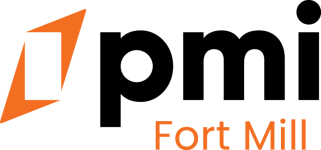A few hours without hot water can turn into a day of phone calls, invoices, and unhappy tenants. Add in a summer AC failure or a slow leak behind a vanity and your week is suddenly about damage control. The smarter path is to engineer maintenance out of your rentals where you can. In Fort Mill, eco-friendly upgrades do exactly that by reducing wear on equipment, preventing water damage, and making homes more comfortable to live in. They also look great in your listing, which means stronger demand and better retention.
Begin by tightening up the way your property is run. Clear rules and communication prevent small headaches from escalating. If you need a quick primer on dialing in expectations, read about crafting stronger lease terms. With that foundation in place, the upgrades below help you spend less on maintenance while giving residents a better experience.
Key Takeaways
- Energy-efficient systems run cooler, fail less often, and reduce emergency repair calls.
- Water-saving devices prevent hidden leaks and lower long-term plumbing costs.
- Durable finishes shrink turnover timelines and keep units rent-ready longer.
- Low-care landscaping preserves curb appeal without weekly attention.
- Strong processes and professional management maximize the return on every upgrade.
Energy Upgrades That Reduce Repair Risk
Fort Mill summers push HVAC systems hard, and winter cold snaps create quick demand on heat. Efficient systems face less strain, cut utility bills for residents, and last longer for owners.
LED Lighting And Controls
Old incandescent bulbs run hot and burn out quickly. LEDs operate cooler, last tens of thousands of hours, and reduce load on circuits. Pair them with motion sensors in common areas and closets to extend lamp life and trim electricity usage that tenants forget to switch off.
Smart Thermostats For System Health
Smart thermostats smooth out temperature swings and reduce short cycling, which is hard on compressors and heat strips. They also send alerts when temps drop too low or the system is running beyond normal patterns, giving you a chance to address clogged filters or failing capacitors before you are paying for a weekend callout.
High-Efficiency Appliances That Last
Efficient refrigerators, washers, and dryers do more than lower power and water use. They are built with improved insulation, brushless motors, and fewer heat stress points. Induction ranges run cooler, so your vent hoods and cabinetry avoid the heat-soak that weakens adhesives and finishes over time. The result is fewer mid-lease breakdowns and longer replacement cycles.
Insulation, Air Sealing, And Fans
Air sealing and attic insulation reduce runtime on HVAC equipment. Add Energy Star ceiling fans to keep air moving so residents are comfortable at higher thermostat settings. That small change lowers wear on compressors and keeps condenser coils cleaner for longer.
Water-Saving Improvements That Prevent Expensive Damage
Water is the most common source of big-ticket repairs. One hidden drip can destroy cabinets, subflooring, and drywall. Reducing water use and monitoring for leaks are essential strategies.
WaterSense Fixtures
Low-flow toilets, showerheads, and faucet aerators save thousands of gallons per year in a single-unit rental. The side benefit is lower pressure impact and less turbulence in older supply lines. Over time, that means fewer pinhole leaks behind walls and fewer calls about slow drains and gurgling traps.
Tankless Water Heaters
Traditional tank heaters corrode, sediment builds, and tanks can rupture. Tankless units avoid standing water, last longer, and only heat on demand. They cut flood risk near laundry rooms and interior closets that are common in Fort Mill townhomes, and they free up storage space that residents appreciate.
Leak Sensors And Pans
Place battery or Wi-Fi leak sensors beneath sinks, behind fridges with ice makers, near washing machines, and under water heaters. Pair them with drain pans where possible. Early alerts let you send a tech when the fix is still a tightening of a fitting instead of a full remediation job.
Durable, Low-Touch Finishes For Faster Turnovers
Every turnover is a race against the calendar. The right materials keep you out of the repaint-recarpet cycle and get you back to market faster.
Flooring That Stays Show-Ready
In rental homes, carpet tends to trap odors and show wear lines. Instead, consider luxury vinyl plank with a commercial-grade wear layer, strand bamboo, or high-quality composite options. These materials resist scratches from pets and furniture, handle moisture better, and typically double your replacement timeline. The faster you can sweep, mop, and relist, the shorter your vacancy.
Low-VOC, Washable Paints
Choose scrubbable, low-VOC paints that resist scuffs and keep indoor air healthier. Neutral but modern tones photograph well and require fewer full-room repaints. In hallways and kitchens, an eggshell or satin finish wipes clean, which means fewer work orders to touch up after move-ins.
Roofing And Siding That Resist Storms
Fort Mill occasionally sees fierce wind and heavy rain. Metal roofing and impact-rated shingles add decades of life and reduce shingle loss. For siding, fiber cement and modern vinyl options resist swelling and paint failure. Fewer storm-related repairs and fewer ladder trips translate straight into savings.
Landscaping That Looks Good With Minimal Attention
Curb appeal boosts showings, but high-maintenance lawns drain your time and budget.
Plant For The Piedmont
Native and well-adapted plants such as black-eyed Susans, switchgrass, and coneflowers thrive in the local climate with less irrigation. Mix evergreen shrubs with drought-tolerant perennials for year-round structure. These selections keep your beds attractive without constant pruning or chemical treatments.
Drip Irrigation Over Sprinklers
Spray heads break and water sidewalks. A simple drip system moves water straight to roots, conserves resources, and reduces fungal issues in turf and beds. You also avoid the overspray that can stain fences and siding.
Solar Path And Security Lights
LED solar fixtures charge by day and illuminate walkways and driveways at night. No trenching, no wiring, and no utility cost. They help night showings and improve perceived safety for residents without extra maintenance.
Pair Upgrades With Management Moves That Amplify Results
Great systems perform best when supported by solid processes. Tighten your operations and the return on each upgrade improves.
Clarify Responsibilities In Writing
Tenants should know how and when to report issues, change HVAC filters, and test smoke alarms. Spell out expectations in your lease addenda and welcome packet. It prevents small problems from becoming big ones and reduces disputes. If you want to sharpen your playbook, check out modern leasing strategies for an overview tailored to the local market.
Automate Collections And Reserve For Maintenance
Cash flow funds preventive work. Use online portals, reminders, and clear grace-period policies to keep rent on time and predictable. Consistency makes it easier to set aside reserves for capital improvements. For a deeper dive, see smarter rent collection and align your systems with resident habits.
Schedule Preventive Inspections
Quarterly or seasonal walk-throughs focused on HVAC filters, sink traps, caulking around tubs, and exterior drainage spots catch issues early. Keep photo logs to track wear. A 15-minute inspection can save a Saturday emergency call.
A Practical Upgrade Roadmap For Fort Mill Owners
Every property is different, but a phased plan helps you move forward without straining your budget.
- Quick wins: LEDs, faucet aerators, and leak sensors pay back immediately.
- Smart controls: Install smart thermostats and set reasonable schedules.
- Water heating: Replace aging tank heaters with tankless units at end of life.
- Turnover materials: During the next vacancy, upgrade to durable flooring and repaint with washable, low-VOC finishes.
- Exterior longevity: When roof and siding near replacement, choose options rated for storms and long service life.
- Landscaping tune-up: Convert a zone to drip, remove thirsty annual beds, and plant natives for a clean, low-care look.
- Document and market: Highlight efficiency features in your listing to justify strong rents and attract residents who value savings.
Why Partner With PMI Fort Mill
PMI Fort Mill helps local owners combine preventive maintenance with smart capital planning so properties last longer and tenants stay happier. Our team coordinates vetted vendors, sets up inspection schedules, and structures lease agreements that reduce confusion. We also market eco-friendly features as real value, not just a bullet point, so you see better applications and fewer calls about utility costs.
Your Next Step To Lower Upkeep
Well chosen upgrades protect your investment, keep residents comfortable, and make operations simpler. The Fort Mill market rewards rentals that are efficient, durable, and thoughtfully managed. If you would like a tailored plan for your portfolio, PMI Fort Mill is ready to help you prioritize projects and handle the implementation.
Turn Efficiency Into A Competitive Advantage
The most profitable rentals are the ones that rarely need rescue. Build that reality by investing in durable materials, efficient systems, and clear processes. Then let local experts guide the rollout. Partner with PMI Fort Mill and take the guesswork out of what to do first. Start the conversation and map your strategy with Schedule your Fort Mill consult.
FAQs
Are eco upgrades worth it in a smaller single-family home?
Yes. Smaller homes often see larger percentage savings because one efficient appliance or a well-sealed attic affects the whole house. You also have fewer fixtures to retrofit, so the payback period is shorter. Many owners start with LEDs, a smart thermostat, and a low-flow showerhead, then move to flooring and water heaters during natural replacement cycles.
How do I compare two upgrade options when budgets are tight?
Estimate total cost of ownership rather than just price. Include parts, labor, expected lifespan, energy or water savings each year, and likely repair frequency. A tankless heater that lasts nearly twice as long and avoids flood damage often beats a cheaper tank model once you include risk and service calls. If you manage several units, standardizing on one or two models reduces spare parts and technician time.
Will eco-friendly features help me market the property in Fort Mill?
Absolutely. Many residents care about predictable bills and comfort. List specifics such as smart thermostat, LED lighting, and luxury vinyl plank flooring. Mention low-VOC paint if a family has sensitivity concerns. Photos of clean drip irrigation, fresh landscaping, and solar path lights also improve first impressions during showings.
What maintenance should tenants handle versus the owner?
Outline simple, routine tasks for tenants such as replacing HVAC filters on a set schedule, reporting leaks right away, and keeping weep holes on windows clear. Owners should handle system servicing like HVAC tune-ups, water heater flushing, and roof inspections. Clarity prevents finger pointing and speeds up resolution when something breaks.
How can PMI Fort Mill support an upgrade project?
We help you assess current property conditions, prioritize high-ROI improvements, schedule licensed vendors, and align upgrades with turnovers to minimize downtime. We also tune your leases and resident communications to protect the investment you just made. After installation, our inspection cadence verifies that systems run correctly so you capture the savings you planned for.


.webp)
